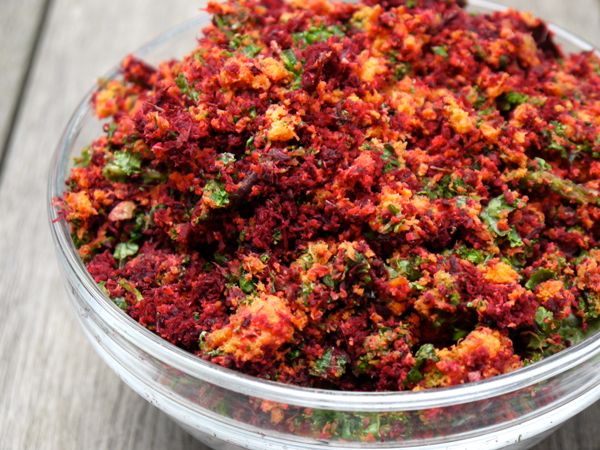I found, in a food processing industry periodical this week, an article on Up-Cycling unpreventable waste. It got me thinking about some issues on which we should probably all be musing. Producers, processors and economists have started talking about it. But what about consumers?
 Folks have been using home juicers for at least a decade, now. There are literally tens
Folks have been using home juicers for at least a decade, now. There are literally tens
of thousands of recipes using or relying on Fruit and Veggie Pulp as an
ingredient. A good place for commercial users to start…
What is ‘unpreventable’ waste’?
Essentially, it’s byproducts or ‘waste’ products from processes or industries we’re all familiar with. The problem is that, until recently, the these byproducts have not been considered ‘products’ at all, either by their own industries or by others which could use them as ingredients or growth nutrients.
Examples of ‘unavoidable waste’ include Pulp from juicing operations, grain pulp from brewing, soy residues from tofu production, and the like. Similar byproducts such as whey from cheese production are already diverted from the ‘waste’ stream and used directly in animal feeds, composting operations or as components in other products or processes. Byproducts that can’t be used directly in other ways that are still going to landfills – but may not have to much longer.
Upcycling turns ‘useless’ waste into ‘products’
This approach is seen as a potential means of diverting large quantities of material from the waste stream into products or ingredients for producing food that humans can consume. In fact, it’s already been identified by food industry researchers as a new product stream that could be worth more than $46 billion dollars annually.
The issues industry faces include, how to identify materials in the existing stream of ‘unavoidable waste’ and ‘productising’ them to suit the needs of the food producing and processing industries.
The opportunity is indisputably there, if only suitable industries can be convinced to espouse the Upcycling philosophy. And/or new ones can be started up that will specifically address it. Booster of Upcycling are optimistic that won’t be difficult.
Would you eat Upcycled foods?
Recent survey deligned to specifically gauge public opinion about Upcycled foods revealed that 61 percent of Canadians and Americans would buy and consume it. I presume that survey question was conditioned on the price being ‘right’.
My take
The idea of Upcycling is definitely laudable and could certainly be made economically viable. But supporters say potential roadblocks persist on the consumer side still loom.
So where lie the challenges on the consumer side? It’s been suggested that new food forms will have to be created (and popularized) to make Upcycled foods saleable to consumers. For instance, a new kind of Candy that looks, as the author of a recent magazine piece on the issue says, like, ” [l]ittle clusters of yummy dried fruit pulp (see photo, above) that makes me think of a granola that’s been on a beach vacation and forgotten its sunscreen.” When you put it that way, I think twice. It would have to be really sweet and fruity (and low in Calories), and inexpensive for me to start popping it as a snack of choice.
I invite you to muse on the question of consumer acceptability of Upcycled foods and decide whether you’d eat it or offer it to your family (see photo, top of page: It loves you. Do you love it?)…
~ Maggie J.

